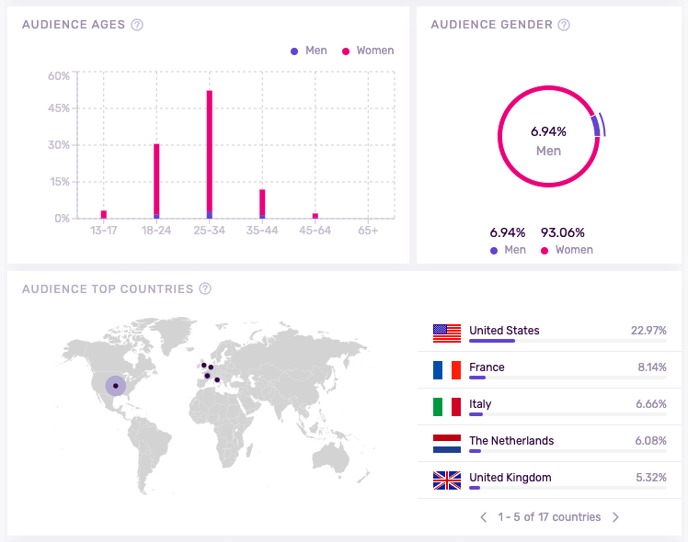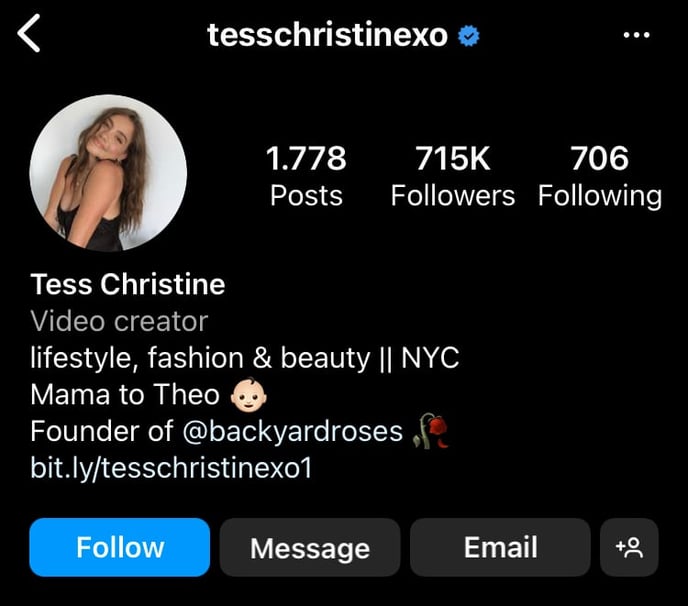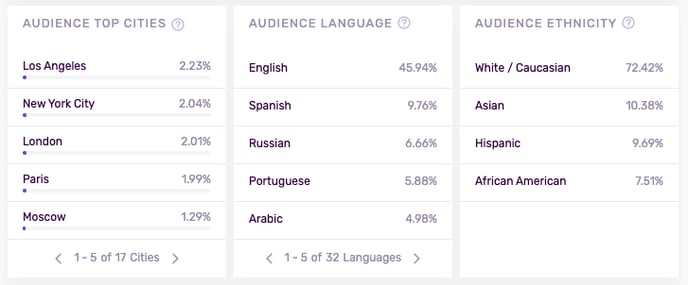Everything About Demographic Data
Learn about the demographic metrics available in your IRM.
Viewing an influencer's audience metrics gives valuable insight into the users you are reaching.
What Audience Demographics Can I See?
Once a profile has been analyzed and added to your IRM, you can view its full audience metrics. This includes:
- Audience age ranges, segmented by gender. In the example below, we can see that this account performs best among women between the ages of 25-34.
- Audience gender – the split between men and women.
- Audience top countries – the percentage of a profile’s followers that comes from each country. To see more top countries, click on the right arrow.

Scroll down for even more demographic data:
- Audience top cities – the percentage of a profile’s audience that comes from each city (Instagram only).
- Audience language – the most common languages and the percentage of users who use this as the primary language of their account.
- Audience ethnicity – the top ethnicity and the percentage of followers who fall into this category. This metric is available as an aggregate percentage (Instagram only).
Where Does Demographic Information Come From?
We determine audience demographics by “viewing” follower profiles, just like a human would. Our technology takes a look at a profile and determines the gender, age, and location of the user thanks to image recognition and natural language processing technologies.
For example, image recognition would “see” that the person in this profile picture is a woman. This data point is then cross-checked with the available text, in this case, the word “mama” in her bio. The combination of these 2 data points allows us to be very certain that this follower is a woman. Furthermore, the text “NYC,” as well as the NY-related location tags in her posts, would back up the fact that she is located in New York.

Why Do the Percentages Not Add Up to 100%?
This is because Influencity only assigns a value to a user when there is sufficient evidence. For example, a follower would only be considered to be from Los Angeles if they are consistently using this location tag or have this information in their profile bio or about section. This way, we differentiate between those who are based in a location and those who are just visiting. Similarly, information from private accounts is not gathered and cannot be measured.
For more information on how we determine audience location, check out this article.
How Can I Use Audience Demographics to Optimize my Campaign?
Brands work hard to understand and identify their “ideal” client or customer – these are the people who are most likely to consume their product. A luxury car company, for example, would not need to reach an audience between 13-17 years of age. For a video game company, on the other hand, this would be the perfect demographic. To make sure your marketing efforts are not wasted on users who are not interested in your product, study your ideal customer and use the IRM to see what influencers can help get your message across to them.
Furthermore, audience demographics can help you segment parts of your audience. In countries like the U.S. that have a huge, diverse population, focusing on specific cities or ethnicities can help you pinpoint your target audience further.
